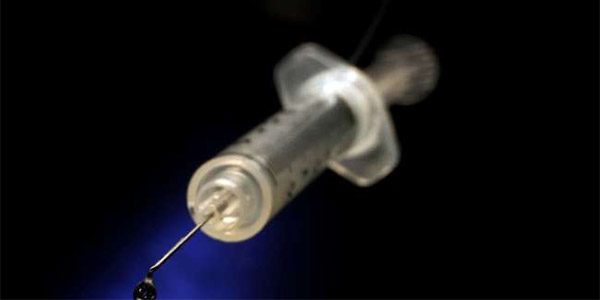News
How a bite from a stray dog shows the sick state of U.S. healthcare

Jan Kern was bitten by a stray dog while traveling abroad and ended up with a jaw-dropping illustration of why the U.S. healthcare industry is completely sick.
That’s because she underwent a series of rabies shots in three countries at four medical facilities. What that revealed, and which will surprise no one, is that Americans pay way more for the exact same treatment than people in other nations.
Moreover, her experience highlights the lack of uniformity for drug prices, including commonly used medications. One facility might charge a few bucks for the same drug that costs thousands of dollars at a U.S. hospital.
“There’s no rhyme or reason to our medical system,” said Rick Kern, 61, who contacted me about his 62-year-old wife’s global healthcare adventure after reading my recent column on drug prices.
What's great about his story as well is that, after I shared it with about a dozen healthcare experts, the consistent reaction was one of utter disbelief. We’re accustomed to shaking our heads at U.S. healthcare costs. Things become significantly more absurd when a couple of overseas medical facilities are stirred into the mix.
“It’s obvious that our system is unlike any other health system,” said Uwe Reinhardt, a healthcare economist at Princeton University. “Other systems were set up to care for patients. Ours was set up by the providers — the hospitals and drug companies — for their own benefit.”
The Kerns are former Palos Verdes residents who now reside on Lake Tahoe. While traveling in Southeast Asia a couple of years ago, Jan was bitten by a stray pooch near Cambodia’s Angkor Wat temple. The couple went to a nearby hospital, where a doctor recommended vaccination for rabies, necessitating a series of four shots.
The first shot at Royal Angkor International Hospital cost $125. That included $66.75 for the dose of Verorab, a $25 hospital charge and a $25 doctor fee.
Jan received her second Verorab shot at a clinic in northern Thailand. The bill this time: A mere $18.50, which provides the best evidence of the drug’s actual cost. Even with the clinic’s overhead factored in, a shot of Verorab, which is manufactured by French pharmaceutical firm Sanofi Pasteur, was priced well below $20.
Things changed dramatically once the Kerns returned to this country. For her third shot, Jan visited Torrance Memorial Medical Center. It was a Sunday, and she had to go to the emergency room, so that added considerably to her cost. The tab for a single injection: $5,254.85.
Shot No. 4 was administered at the Redondo Beach branch of HealthCare Partners medical group. This time the bill was $427.
It’s important to note that the Kerns weren’t on the hook for any of these charges. They’d shrewdly purchased travel insurance before their trip, which covered all related medical costs, even once back in the United States.
Also, that crazy bill from Torrance Memorial was the hospital’s opening salvo in haggling with insurers. Such astronomic charges typically are paid only by those lacking coverage. The actual insured price invariably will be much lower.
And Verorab, which is commonly prescribed for rabies in Europe and Asia because it’s relatively cheap to produce, isn’t available in the United States. Costlier vaccines must be used.
Even so, the Kerns’ experience demonstrates the financial pitfalls that await anyone with a high-deductible health plan and thus responsibility for a greater share of medical costs. It also underlines the lunacy of U.S. healthcare pricing.
Clearly a big hospital like Torrance Memorial has more overhead expenses than a little clinic in rural Thailand — it’s not an apples-to-apples comparison. But that doesn’t mitigate how a bill for less than $20 in another country can turn into a bill for over $5,000 in this one.
“Even if the Torrance bill was $1,200, that’s still a stark difference in prices,” said Nadereh Pourat, a professor of health policy and management at UCLA. “It shows that the free market doesn’t work for healthcare. It works for buying televisions, but with healthcare, there’s no price transparency.”
She and other experts I spoke with said this lack of transparency, plus a lack of competition, suggest a need for pharmaceutical price controls — which are a common feature of the healthcare systems of other developed countries.
Otherwise, they said, drug companies and hospitals are free to charge as much as they can get away with.
“People have no ability to price shop,” said Dana Goldman, director of the USC Schaeffer Center for Health Policy and Economics. “And that certainly works to the benefit of suppliers.”
Larry Van Horn, director of the Center for Health Care Market Innovation Research at Vanderbilt University, said he sees hope for change in the growing use of high-deductible insurance plans.
“Neither providers nor medical technology companies will be able to charge the prices they have historically if they expect an average American to foot the bill,” he said. “That is the future, and it will be bright. Providers will have to supply services that people can afford out of pocket, and this will force them to innovate and take down their costs to survive.”
I asked Rick Kern what he learned from his wife’s trip down the healthcare rabbit hole.
He said the main thing was how easy it was to understand what was happening with overseas medical systems. Treatment was straightforward, and costs were clearly spelled out and affordable.
“Here in the U.S.,” Kern said, “we received a bill from Torrance Memorial and nothing was itemized; nothing was clear. Most of all, how do you justify such a huge markup?”
He laughed. “I have an MBA and am a former chief financial officer, and I can’t understand this stuff.”
That should have us all foaming at the mouth.
Original Post: http://www.latimes.com/business/lazarus/la-fi-lazarus-rabies-vaccine-prices-20160906-snap-story.html